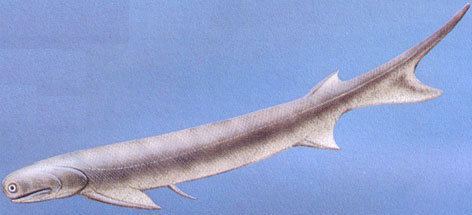Phylum Chordata Order Acanthodiformes | Rank Genus | |
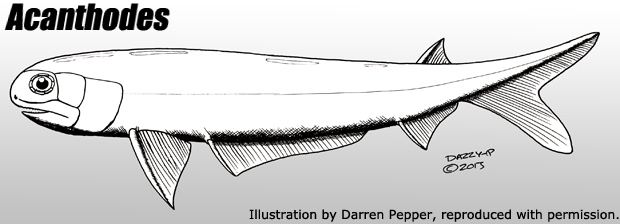 | ||
Similar Acanthodii, Acanthodiformes, Coccosteus, Cheirolepis, Cheiracanthus | ||
Barrel cactus ferocactus acanthodes
Acanthodes (meaning spiny base or thorny base) is an extinct genus of spiny shark. Fossils have been found in Europe, North America, and Australia.
Contents
- Barrel cactus ferocactus acanthodes
- Abz creatures acanthodes and tiktaalik
- Description
- Discovery
- Paleobiology
- References
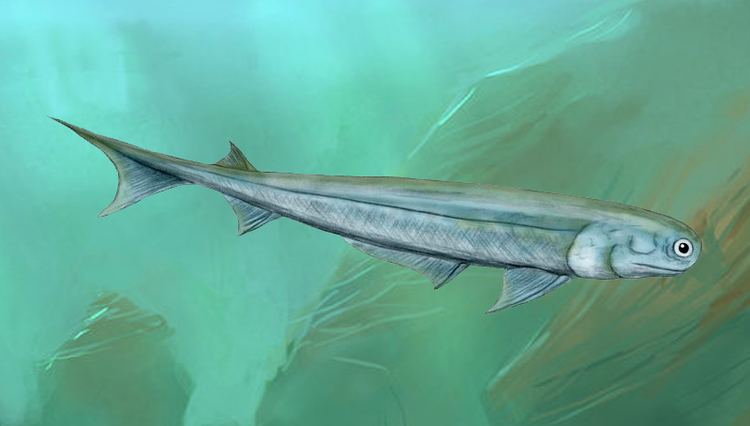
Abz creatures acanthodes and tiktaalik
Description

Compared with other spiny sharks, Acanthodes was relatively large, at 30 centimetres (12 in) long. The genus had no teeth, instead gills. Because of this, it is presumed to have been a filter feeder, filtering plankton from the water. The Acanthodes has been found to have only a couple of skull bones. It was covered in scales that were cubical in shape.
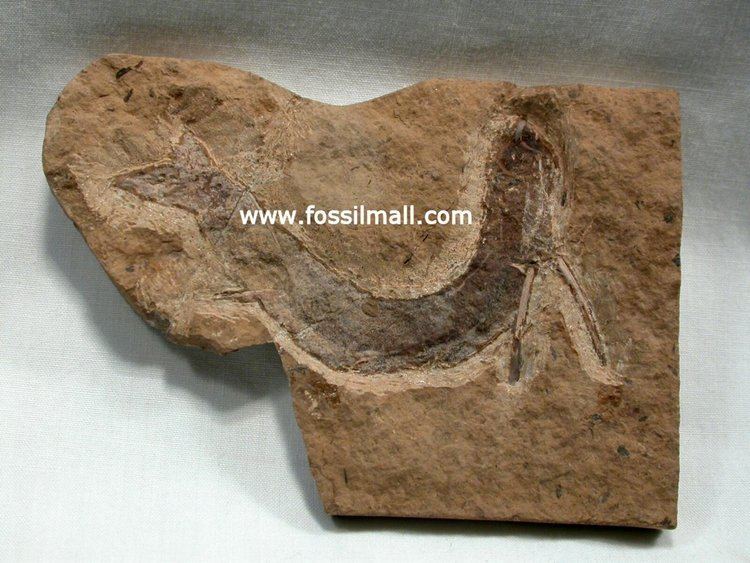
It also had fewer spines than many of its relatives. Each of the paired pectoral and pelvic fins had a spine, as did the single anal and dorsal fins, giving it a total of just six, less than half that of many other species.+ A fossil discovered near Hamilton, Kansas in the Upper Carboniferous Hamilton Formation, and published in 2014 as Acanthodes bridgei was so well-preserved that traces of its eye tissue were sufficient to establish that Acanthodes had both rod and cone photoreceptor cells, and thus profited from color vision.
Discovery
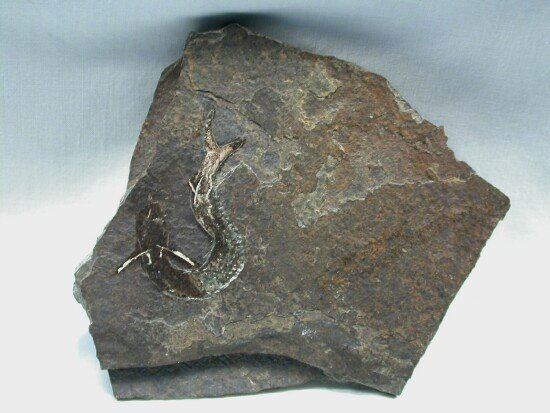
Several specimens of Acanthodes were recovered from an abandoned quarry (Hamilton Quarry) which contained individuals ranging in total length from 54 nm to 410 nm. A. bridgei was one of the species found there. A. bridgei has large orbits, a shorter pre-pectoral region, and shallower insertions of the fin spines.
Paleobiology

The scientific classification of acanthodians is still a subject of great dispute, due to the fact that they share qualities of both bony fish (osteichthyes) and cartilaginous fish (chondrichthyes). A recent study has suggested that Acanthodes may have been, or closely related to an early common ancestor to all cartilaginous and bony fish, including humans. Acanthodian internal anatomy is primarily understood by Acanthodes bronni because it remains the only example preserved in substantial detail, central to which is an osensible osteichthyan braincase. For this reason, Acanthodes has become an indispensable component in early gnathostome phylogenies. Acanthodes is quantifiably closer to chondrichthyans than to osteichthyans. However, phylogenetic analysis places Acanthodes on the osteichthyan stem, as part of a well-resolved tree that also recovers acanthodians as stem chondrichthyans and stem gnathostomes. As such, perceived chondrichthyan features of the Acanthodes cranium represent shared primitive conditions for crown group gnathostomes. There has been increasingly detailed findings of early gnathostome evolution highlights ongoing and profound anatomical reorganization of vertebrate crania after the origin of jaws but before the divergence of living clades.
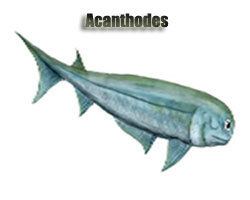
As mentioned earlier, A. bronni is an acanthodian, a group of stem gnathostomes more derived than placoderms, but fairly close to the origins of chondrichthyans and osteichthyans. A. bronni lived about 290 million years ago during the Carboniferous period. Researchers took 138 characteristics of various skulls of A. bronni and compared these with skulls of both chondrichthyans and osteichthyans, and determined that acanthodians are closer to cartilaginous fishes.
